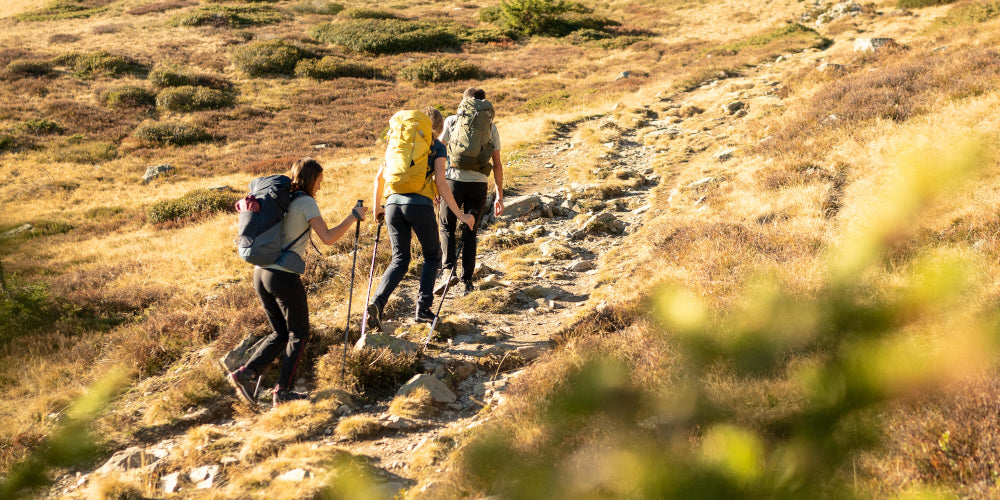
How to Adjust Your Hiking Backpack
Share
If there is one piece of equipment that every hiker should not neglect, it is their backpack. And to make the most of your outing, it's preferable to have a backpack that won't bother you. To avoid this, here are three tips for hiking with peace of mind: choose the right backpack for your size, make the right adjustments, and balance the load correctly. All you have to do is look up and enjoy the mountains!
Choose the Backpack That's Right for You
In the past, our team of engineers, made up of hiking enthusiasts, designed backpacks based on gender. Now, it designs its backpacks according to your size, rather than your gender. Why? Because it asked itself the following question: is there a real difference between the male and female morphology?
On the skeleton, yes. But beyond that, there are different builds, different muscle masses and different types of fat, which are not specific to women or men. After conducting field tests, it emerged that the most important factor in finding a backpack, which will suit every hiker, is the height of the back.
More important than the gender-specific features (hips, chest, etc.) is your height. It is the stature that takes precedence. A person of short stature feels more comfortable with a pack that has a relatively small back, while a tall person will prefer a larger back.
Having made this observation, it seemed obvious to offer our mountain walking backpacks in two sizes: A size S for hikers under 1.70m tall. And a size L for those who are more than 1.70m tall. Here's a tip if you are between 1.65m and 1.75m tall: make sure you try on the backpack before buying it. Depending on the length of your legs or your back, you will need to choose between the two sizes.
Making the Right Adjustments for a Comfortable Hike
To make the most of your mountain hike, you must have a backpack that is compatible with your stature. But this is not enough. It must also be correctly adjusted so that you don't feel as if you're carrying the weight of the world on your shoulders.
A number of steps are needed to properly adjust it:
1. Loosen all the straps
The shoulder straps, waist belt and load adjusters.
2. Put the backpack on
For optimal adjustment, remember to perform this step once your backpack is loaded (we explain how to properly balance this load below in this article).
3. Put the belt around your waist and tighten it
A well-positioned belt should conform to the shape of your hips. By carrying more of the load at the waist rather than the shoulder straps, you won't feel the full weight of the backpack on your shoulders.
4. Tighten the shoulder straps
They should be tight enough to hold the backpack in position, without pulling on your shoulders too much. There should be enough space for a finger to pass between your shoulder and the shoulder strap.
5. Adjust the load adjusters and the sternum strap
The backpack and your back must move as one. Firmly tighten the load adjusters so that the backpack doesn't pull you backwards. However, leave a little scope so that it doesn't hinder your movements.
Correctly Balancing the Load
Now that you have a properly adjusted backpack in the right size, you're finally ready to go hiking. Well, almost! There is one last tip we need to give you before you start eating up the miles to reach the summits: remember to properly balance the load of your backpack.
After carefully selecting the equipment you need, it is time to decide how best to pack it. When doing this, you have one priority: properly balancing the load between the front and rear and the left and right. If your pack is leaning to one side, your body will have to work to counteract this imbalance, and get tired as a result. You also increase the risk of a fall, when you walk up and downhill. Equally important is keeping the load compact in order to prevent tapping or swinging movements that could make you fall.
But what is the secret to a well-packed backpack?
The heavy items must be placed in the middle of the backpack closest to your back, while medium weight items go at the bottom and around the sides, with the lighter items at the top.















